Alan Upton
Floral Park, New York
Floral Park, New York, is on Long Island about 15 miles east of Times Square. The village is incorporated and part of Nassau County. The land area is small, only 1.45 square miles and there is a population of just over 15,000 people.
Some degrees of amusement develop in conversations about Floral Park’s famous natives. Among the odd baseball player and rap-music performer are three men who deserved separate mention:
- If you are a true-crime enthusiast and have knowledge of the New York City crime families and those who associated with them, the name Benedetto Aloi should be familiar. Aloi is famous (at least in New York) because of the “Windows Case.” If this whets your appetite for more, Google the Profaci Family and you will learn how they stole $142 million from the New York Housing Authority. “Benny” was a resident of Floral Park until his death in 2011.
- Did you see the movie Star Wars? Yes, I know it was 45 years ago, but how could you forget it? Do you like the big-sound music that was part of it? Are you familiar with the theme music of other films like Harry Potter and the Sorcerer’s Stone, Close Encounters of the Third Kind, Home Alone, Raiders of the Lost Ark, Schindler’s List, and E.T.? The musical scores of these, and many other movies, were composed by John Williams, who celebrated his 90th birthday last week (February 8th). John Williams was a long-time resident of Floral Park, New York.
- John Lewis Childs, a name not as recognized as “Benny” Alio and Maestro Williams, is Postcard History’s featured personality today.
* * *
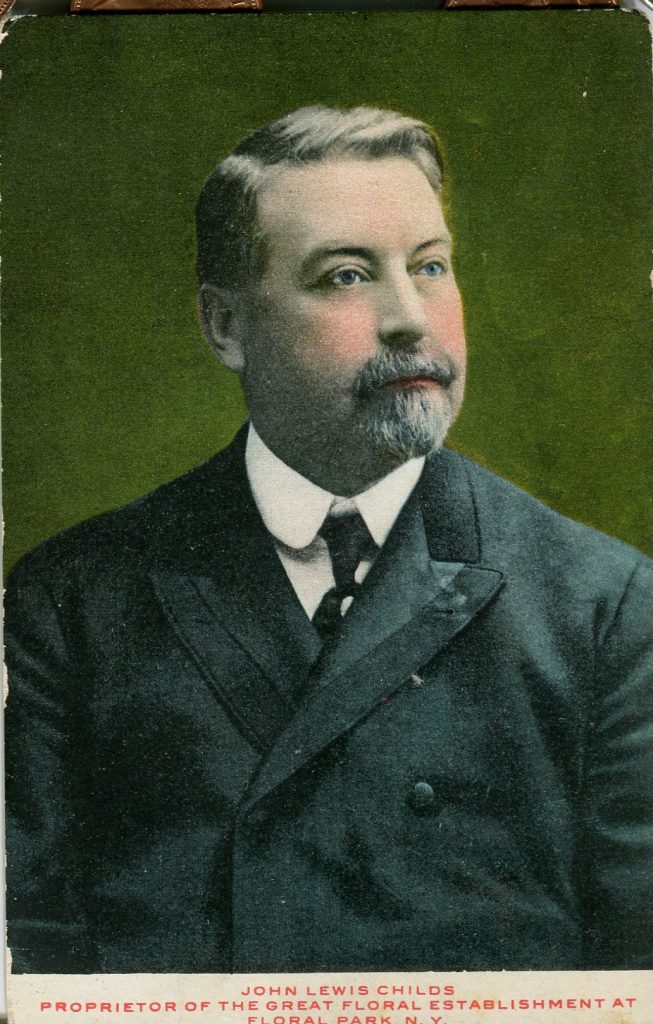
John Childs was born in Maine in 1856. Early in life John developed an interest in the “world of nature.” Horticulture in the early nineteenth century was just then being recognized as a separate science under an umbrella then known as botany. Those who involved themselves in horticulture acknowledged that plant husbandry was the best, and likely only, way to improve plant growth, quality of harvest, and the nutritional value of crops. Those in the ranks also supposed that only they could control or create a natural plant resistance to insects and diseases. Also, that horticulturists would by necessity need knowledge of conservation, landscaping, and soil management.
At age seventeen, Childs took a job in East Hinsdale, New York, as a seed seller. He worked as an apprentice for the Allen Company. Through demanding work during long hours, Childs soon developed a plan for his own business. His early training was quite a satisfactory start for a young entrepreneur but just a year after his arrival in New York he rented a space where he could develop his new seed and bulb business.
The growing business needed additional space; at every opportunity Childs bought small parcels of property on which he planted beds of flowers and shrubs from which he could harvest the seeds he would sell just prior to the next growing season.
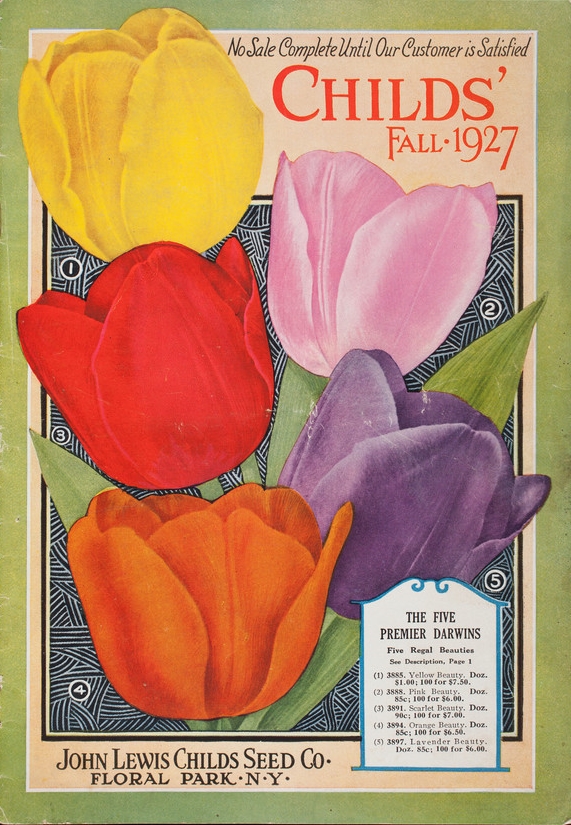
Using folded flyers, printed catalogs, and later postcards, Childs was working far ahead of every current concept of making money from supplying garden enthusiasts with the seeds they needed. In his quest for property, Childs took such liberties as renaming the streets that bordered his land after flowers.
When he had enough land to command the attention of the locals, he suggested that East Hinsdale be renamed Floral Park. And so, it was, and by 1891 the post office was renamed, too!
The John Lewis Childs Seed Company was so successful as a mail order concern that it led to the development of railroad depot and freight station on Child’s property. The volume of mail the business received, and sent, grew the local post office to the extent that it was compared with the post offices in Boston, Chicago, and Baltimore.
In 1899 Floral Park became the westernmost community in the newly formed Nassau County, Long Island. In 1903 most the village boasted more than 200 acres of Childs Company flower beds. That was the era in which these “tinted” postcards were created.
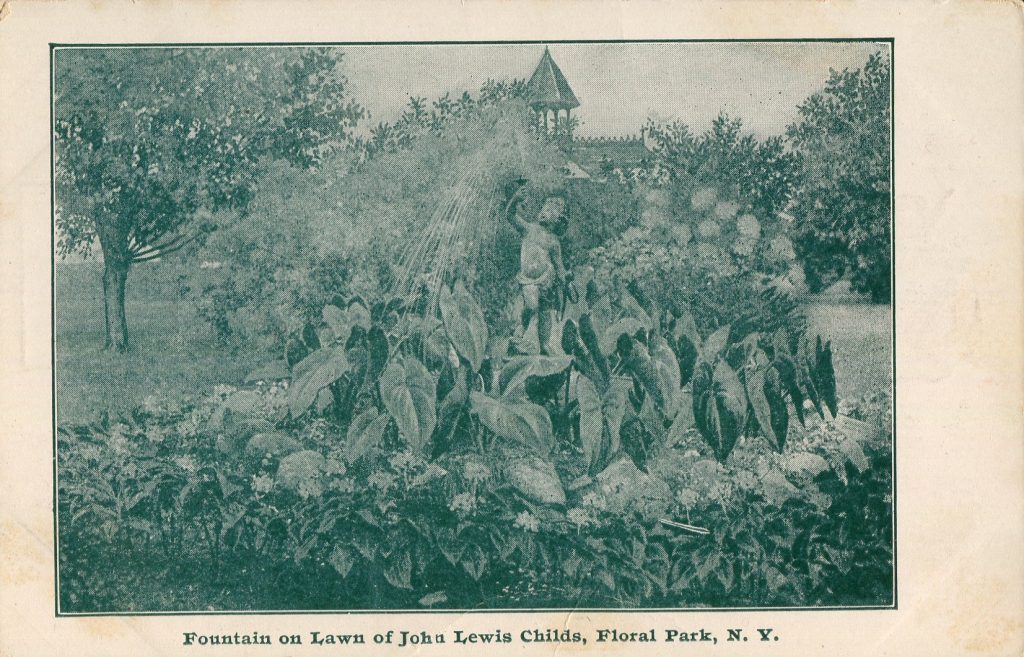
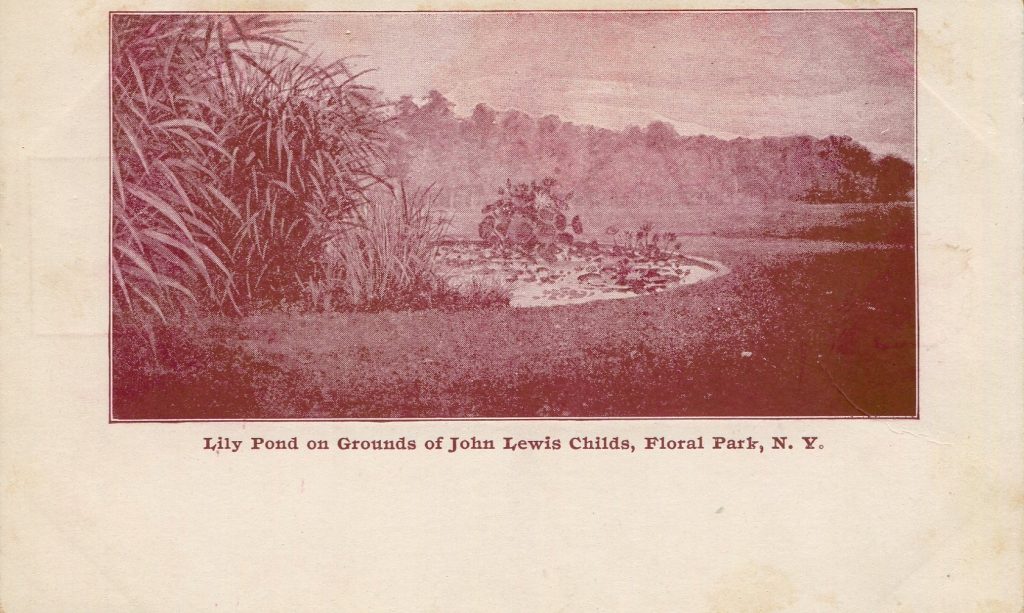
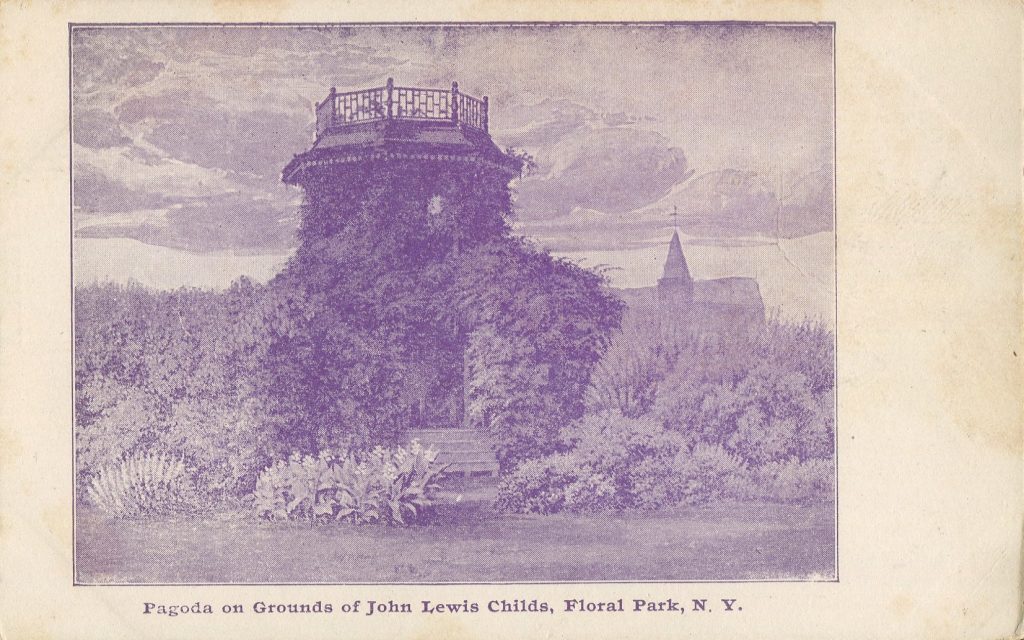
Floral Park was incorporated in 1908 and Childs served as the first village council president.
Thank you for the background story on Floral Park. My grandparents resided there, my mother was born there, and I resided there as a young child. It is a town near and dear to my heart!
Childs’s company failed to survive the Great Depression, and his mansion was demolished in 1950.
One of my grandmother’s sisters lived in Floral Park. I visited there many times and never knew the origin of the name.